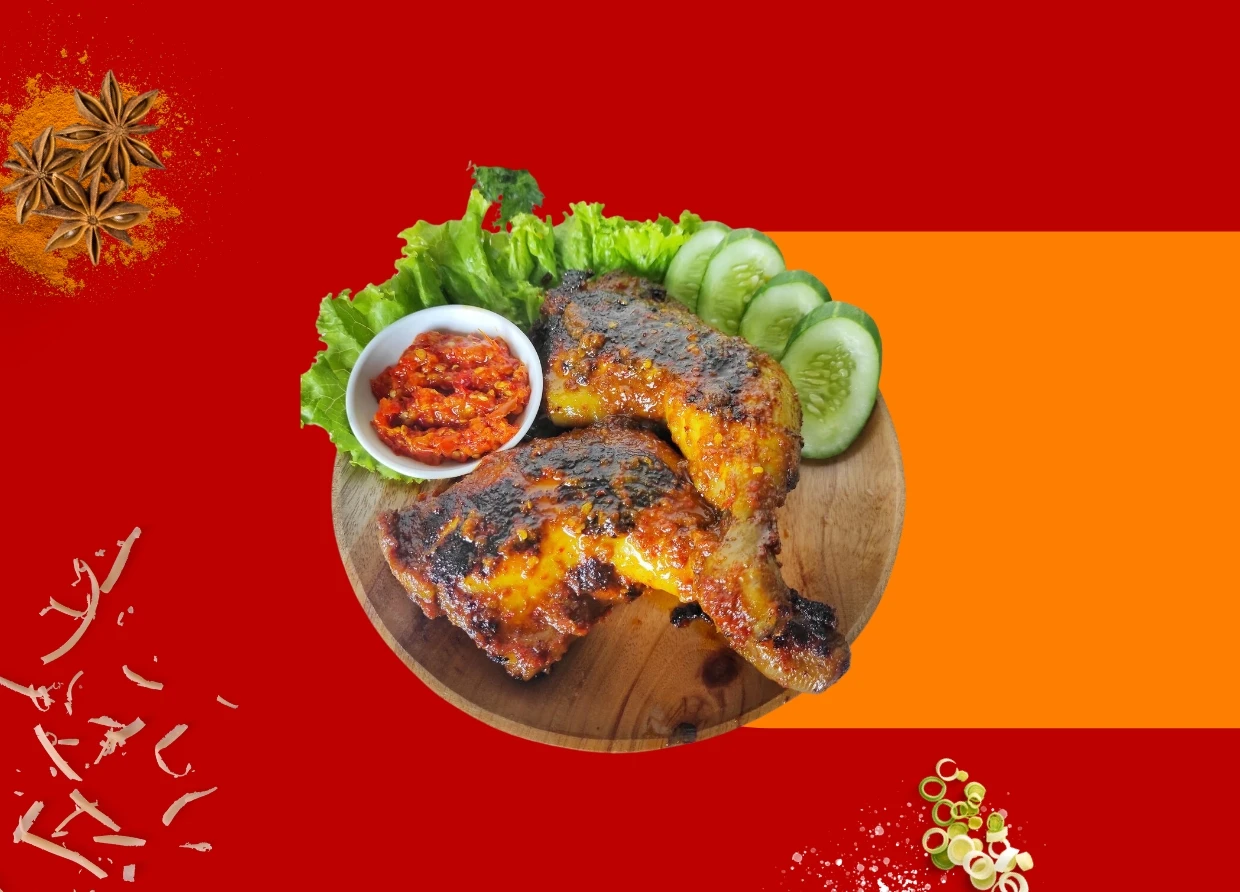FESTIVAL LESTARI PUTS SIGI'S CULINARY WONDERS IN THE SPOTLIGHT: A CULINARY JOURNEY INTO SUSTAINABLE LIVING
Sigi's Minimalistic Culinary Approach: A Symphony of Flavors with Rica, Garam, and Local Treasures

The culinary landscape of Indonesia is a never-ending adventure, with each region offering a unique tapestry of flavors waiting to be explored. One such culinary gem is found in the heart of Sulawesi Tengah, in the district of Sigi. The local culinary scene in Sigi is a treasure trove of delicious delights, and recently, it took center stage at the Festival Lestari organized by Lingkar Temu Kabupaten Lestari (LTKL).
The Festival Lestari, held a few weeks ago, was more than just a gathering of food enthusiasts; it was a celebration of sustainable living through gastronomy. At its core was the "Telusur Rasa Lestari: Jelajah Rasa dan Budaya Kabupaten Sigi" program, a tangible manifestation of the vision for sustainable economics at the grassroots level. The initiative aims to harness the natural resources, biodiversity, and cultural wealth of the region, managed in a sustainable manner, involving local human resources to maximize the potential of sustainable economics.
The event brought together culinary practitioners from various backgrounds, all members of the collaborative effort known as "Mitra Gotong Royong Merangkai Rasa Lestari" (Partnership for Building Sustainable Tastes). Among the notable participants were Cork & Screw (UNION Group), Kaum Restaurant (Potato Head Group), Nasi Peda Pelangi, Masak TV, Kang Duren, and Parti Gastronomi.
These culinary experts immersed themselves in the local kitchens of Sigi, tasting and experiencing the authentic flavors that define the region. What set this event apart was not just the exploration of the local cuisine but the creative process of reimagining and reinventing traditional dishes from Sigi. Despite using minimal spices, they were captivated by the richness of flavors in Sigi's culinary creations.
"The Festival Lestari is not just about savoring delicious food; it's a journey into the heart of Sigi's culinary identity. It's a testament to the fact that sustainable living can be a flavorful experience," said one of the participants.
The fusion of traditional and contemporary culinary techniques resulted in a feast that delighted the senses. The dishes showcased the authenticity of Sigi's culinary heritage while demonstrating the potential for sustainable culinary practices.
As the Festival Lestari concluded, it left an indelible mark on the culinary map of Indonesia. Sigi's culinary treasures were not only savored by the participants but also creatively incorporated into modern culinary expressions. This event serves as a reminder that preserving local culinary traditions can coexist harmoniously with sustainable practices, creating a win-win situation for both the community and the environment.
The Festival Lestari has undoubtedly placed Sigi on the gastronomic map, inviting food enthusiasts and culinary explorers to embark on a journey to discover the hidden gems of Central Sulawesi's culinary landscape.
Sigi's Culinary Secret Revealed
In the midst of Sigi's culinary wonders lies a secret that enhances the flavors of its dishes, making them truly unique. Sakina Ta’ruf, the Head of the Creative Economy Department at the Department of Tourism of Sigi Regency, shared insights into the culinary potential of Sigi, revealing five promising dishes due to their delicious taste despite their seemingly simple cooking methods.
These dishes include Ayam Bambu (grilled chicken in bamboo), Ayam Biromaru (grilled chicken with red coconut milk sauce), Uta Dada (grilled village chicken in coconut broth), Kaledo (spicy sour bone soup), and Uta Kelo (moringa leaves in coconut milk). What sets Sigi's cuisine apart is its minimal use of ingredients, relying on just two key elements: rica (chili) and garam (salt), occasionally complemented by tamarind and lemon leaves.
In contrast to spice-laden dishes elsewhere, Sigi's culinary repertoire relies on simplicity, letting the natural taste of the primary ingredients shine through. The unique sambal (spicy condiment) of Sigi adds another layer of depth to its culinary wonders, showcasing the region's minimalistic yet flavorful approach to cooking.
Locally Resourced for Cooking
Sigi's culinary heritage is deeply intertwined with its unique markets and locally sourced ingredients. The markets, which open once or twice a week in the Sigi Regency valley area, offer fresh produce and herbs, including moringa leaves, cassava leaves, fern leaves, pumpkin leaves, scallions, chilies, and lemongrass.
Households in Sigi rely on their gardens for fresh produce, sharing the excess with neighbors. For animal protein, residents catch tilapia from Lake Lindu or obtain chicken from their own coops or local farmers, exemplifying a sustainable and community-centric culinary ecosystem.
Preserving Culinary Heritage through Festivals
Sakina Ta’ruf expressed deep appreciation for the Telusur Rasa Lestari event, emphasizing its role in preserving and promoting Sigi's culinary treasures. Initiatives like this play a vital role in passing down the art of cooking Sigi dishes to future generations, ensuring the endurance of recipes and culinary skills.
Nadya Dharmawan, owner of Warung Gotong Royong Nasi Peda Pelangi, stressed the importance of introducing local Sigi cuisine in a popular and consistent manner. She suggested coupling it with narratives that enhance the dining experience, fostering a deeper connection between consumers and the culinary heritage of Sigi.
"In November, we are planning to host the fourth Festival Danau Lindu. This biennial event will also showcase and market Sigi's unique foods and dishes. The local community and tourists from surrounding areas are eagerly anticipating this event," revealed Sakina Ta’ruf, highlighting the commitment to showcasing Sigi's culinary wonders on a broader stage.
From Local Treasures to Global Tastes
Sakina Ta’ruf envisions Sigi's culinary offerings reaching a global audience, but the journey begins with gaining widespread recognition within Indonesia. Culinary enthusiasts and chefs shared their insights on how Sigi's culinary wonders could be promoted beyond the region.
Jessica Eveline of Kaum Jakarta suggested a collaboration between the Sigi Regency government and culinary enthusiasts to develop and promote local Indonesian food. Compelling narratives about the stories behind the dishes and their ingredients could be part of the promotion strategy.
Nadya Dharmawan echoed these sentiments, predicting that Sigi's cuisine would resonate well with the younger generation, offering a new dining experience for urban consumers seeking healthy and naturally flavored options.
Fernando Sindu, Head Chef of Cork & Screw, suggested repackaging certain local items for broader distribution, such as non-soy-based spice soy sauce and red biromaru sauce. The potential global appeal of Sigi's culinary wonders was further emphasized, with the belief that products like Sigi's sambal could enter the world market.
Sigi's Culinary Ascension
In Jakarta, upscale restaurants showcasing regional cuisines from places like Manado, Padang, and Papua abound. However, to see Sigi's culinary creations featured in high-end establishments, a touch of modernity might be the key.
Jessica proposed a modern twist to present Sigi's dishes, making them more appealing and easily accepted by urban dwellers. "Creativity in presenting modern dishes with Sigi's local specialties could attract more attention. For three months, Resto Kaum featured a special menu packaged as 'Cipta Rasa vol. Sigi,' including galo kaledo, urap uta kelo, ayam biromaru, and kue tetu balapis."
Warung Nasi Peda Pelangi also introduced ayam panggang biromaru for a month as part of the Sehari Rasa program, receiving overwhelmingly positive responses. Currently, in the research and development phase are grilled fish with sambal dabu and bamboo chicken. If successful, these items are planned for a rotating menu release.
Addressing the concept of fusion food incorporating Sigi's culinary wonders, Nadya suggested, "Fusion food creations based on the creator's imagination could be introduced. For instance, with a Latin American touch. Fish and seafood can be prepared Japanese-style. The red biromaru spice could be as popular as the toppoki spice, for example."
Nando agreed that Sigi's cuisine lends itself well to fusion menus, having experimented with it himself. "The taste of ayam biromaru is remarkably similar to chipotle chicken with peri-peri sauce from Latin America. The difference lies in the creamier texture of biromaru due to the coconut milk, while peri-peri is more acidic because it uses vinegar. I tried pairing grilled ayam biromaru with chimichurri sauce from Argentina and garlic rice from Peru. The combination was delightful and made sense."
Nando and his team initiated the "Rasa & Bar Lokal: An Independence Day Celebration with Flavors of Sigi" program, presenting ten signature Sigi dishes in an intriguing set menu. "Through this menu, we shared the lessons we learned while in Sigi, the ingredients we discovered, and the stories behind Sigi's cuisine. This culinary journey received an incredibly positive response, with many requesting a repeat of such an event."
Ayam Panggang Biromaru Recipe
- 1 whole chicken
- 15 shallots
- 9 garlic cloves
- 1 segment of ginger
- 3 candlenuts
- ½ tablespoon coriander
- 1 tablespoon cumin
- 1 tablespoon fennel
- ¼ liter green bird's eye chilies
- 1 liter coconut milk
- Bottled green chili sauce to taste
- Bottled tomatoes to taste
- Flavor enhancer to taste
Cooking Instructions:
- Grind all spices into a paste, then sauté until fragrant.
- Cook the coconut milk until boiling, add the sautéed spice paste, and remove from heat.
- Add bottled green chilies, bottled tomatoes, and flavor enhancer according to taste.
- Grill the chicken over charcoal, basting it with the spice mixture 3-5 times to ensure the flavors penetrate evenly.
About Lingkar Temu Kabupaten Lestari (LTKL):
Lingkar Temu Kabupaten Lestari (LTKL) is an association of regencies committed to sustainable development, environmental conservation, and community well-being through multi-stakeholder collaboration. As the sustainable development caucus of the Indonesian Regency Government Association (APKASI), LTKL has nine active member regencies, including Aceh Tamiang, Musi Banyuasin, Siak, Sanggau, Sintang, Kapuas Hulu, Gorontalo, Bone Bolango, and Sigi, along with 27 primary network partners at local and national levels. Through the Declaration of the Lestari Regency Vision in 2021, member regencies pledged to protect at least fifty percent (50%) of forests, peatlands, and other essential ecosystems while improving the well-being of one million farmer families within the regency's jurisdiction by developing multi-stakeholder collaboration networks.
As a forum, LTKL aims to support regency efforts in realizing the vision of a sustainable regency, focusing on key indicators such as increasing regional income, reducing poverty rates, and preparing development directions to reduce deforestation rates in line with national policy directions. LTKL serves as a platform for regional leaders to collaborate and share knowledge in achieving the vision of a sustainable regency in their respective areas.
Visit www.kabupatenlestari.org for the latest information.
#THE S MEDIA #Media Milenial #Sigi #Festival Lestari #Culinary Wonders #Sustainable Living #Telusur Rasa Lestari #Lingkar Temu Kabupaten Lestari #Mitra Gotong Royong Merangkai Rasa Lestari #Culinary Exploration #Central Sulawesi #Authentic Flavors #Fusion Cuisine #Local Ingredients #Sigi's Markets #Culinary Heritage #Preservation #Global Culinary Aspirations #Indonesian Cuisine #Traditional Dishes #Modern Twist #Culinary Collaboration #Jakarta Culinary Scene #Culinary Traditions #Festival Danau Lindu #Culinary Legacy #Sigi Regency #Creative Economy #Eco-friendly Gastronomy #Indigenous Ingredients #Sigi's Secret Recipes #Sustainable Practices #Environmental Conservation #Culinary Diversity



























